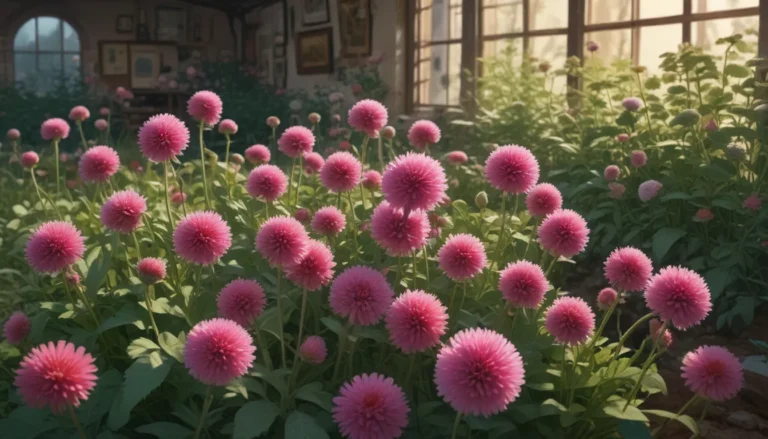How to Diagnose and Treat Iron Deficiency in Roses

When it comes to gardening, every plant needs specific nutrients to thrive. Just like humans need a balanced diet to stay healthy, roses require various nutrients to grow strong and vibrant. While most gardeners are familiar with nitrogen, phosphorus, and potassium, they may overlook the importance of micronutrients like iron.
Iron plays a crucial role in the health of roses, aiding in chlorophyll formation, oxygen transportation, and cell division. Without sufficient iron, roses can suffer from a nutrient deficiency that can impact their growth and development.
In this comprehensive guide, we will explore how to identify and correct iron deficiency in roses. From understanding the symptoms to treating the issue effectively, we will provide you with all the information you need to ensure your roses remain healthy and vibrant.
What You’ll Learn
- The Importance of Iron for Roses
- Common Symptoms of Iron Deficiency
- Effective Treatment Methods
Iron deficiency is a common issue that many rose gardeners face. However, with the right knowledge and tools, you can easily address the problem and help your roses thrive. Let’s delve into the fascinating world of iron and roses to ensure your plants remain in optimal health.
The Importance of Iron for Roses
Iron is a micronutrient essential for the growth and development of roses. It plays a vital role in chlorophyll formation, which is crucial for photosynthesis and overall plant health. Additionally, iron facilitates oxygen transportation within the plant and supports cell division, enabling roses to grow and flourish.
Unlike some nutrients that can move within the plant as needed, iron is immobile. Once absorbed by the plant, it remains in place, primarily in older foliage. When a rose lacks sufficient iron, chlorosis occurs, resulting in yellowing of leaves due to a lack of chlorophyll.
Spotting iron deficiency in roses is relatively straightforward, as the symptoms are distinctive and easy to recognize. By understanding the role of iron in plant health, you can quickly identify and address any issues affecting your roses.
Common Symptoms of Iron Deficiency
Iron deficiency in roses manifests through specific symptoms that set it apart from other nutrient deficiencies or plant diseases. By being aware of these signs, you can promptly diagnose and treat the issue to prevent further damage to your plants.
Here are some common symptoms of iron deficiency in roses:
- Young leaves exhibit green veins, while the rest of the leaf turns yellow.
- Yellowing of upper leaves, with veins also turning pale yellow.
- Stunted growth and small, unproductive leaves.
- Weakened plants vulnerable to diseases like downy mildew and black spot.
Recognizing these symptoms early on is crucial to prevent extensive damage to your roses. While iron deficiency can weaken plants, addressing the issue promptly can help restore their health and vitality.
Effective Treatment Methods
Once you’ve identified iron deficiency in your roses, the next step is to address the problem and provide the necessary nutrients to support their growth. While treating iron deficiency is relatively simple, determining the underlying cause of the issue requires some investigation.
In addition to inadequate iron in the soil, alkaline soil conditions can also prevent roses from accessing iron, regardless of the amount present. Before applying any treatments, it’s essential to test your soil to determine its pH level and overall nutrient content.
Testing your soil annually is a good practice to ensure your roses have access to the nutrients they need for optimal growth. By maintaining a slightly acidic pH of around 6.5, you can create an environment conducive to healthy rose growth.
If your soil is too alkaline, you may need to adjust its acidity using sulfur or ferrous sulfate. These amendments can help lower the pH and make iron more accessible to your roses. Remember that adjusting soil pH is an ongoing process that may require periodic testing and treatment to maintain optimal conditions.
For adding iron directly to the soil, consider using chelated iron, which is readily available to plants and only requires a one-time application. While this method may not reverse yellowing in existing leaves, it can promote new growth and ensure your roses receive the iron they need.
When applying iron supplements, follow the manufacturer’s instructions for optimal results. Look for products with a 5% iron content and apply them early in the growing season for maximum effectiveness.
In conclusion, roses are nutrient-hungry plants that require regular feeding to thrive. By understanding the role of iron in plant health, recognizing the symptoms of deficiency, and implementing effective treatment methods, you can ensure your roses remain healthy and beautiful year-round. Remember to test your soil regularly, adjust pH as needed, and provide the necessary nutrients to support your roses’ growth and vitality.
I hope this guide has provided you with valuable insights into identifying and correcting iron deficiency in roses. For more information on rose care, be sure to check out our other comprehensive guides on rose growing, winterization, pest control, and disease prevention.
Let us know in the comments if you have any specific rose cultivars that are more susceptible to nutrient deficiencies or if you’ve encountered any challenges in your rose garden. Your feedback and experiences can help other gardeners navigate similar issues and create thriving rose gardens of their own.
Remember, a well-nourished rose is a happy rose, so make sure to provide your plants with the nutrients they need to flourish. Happy gardening!





